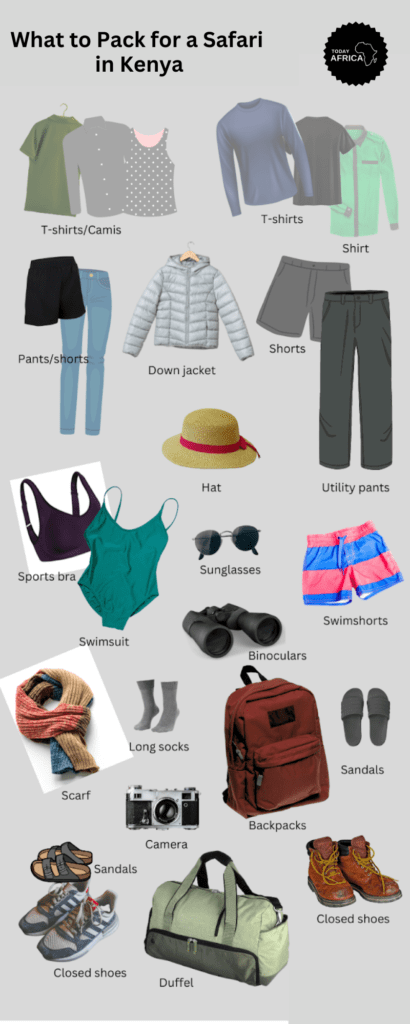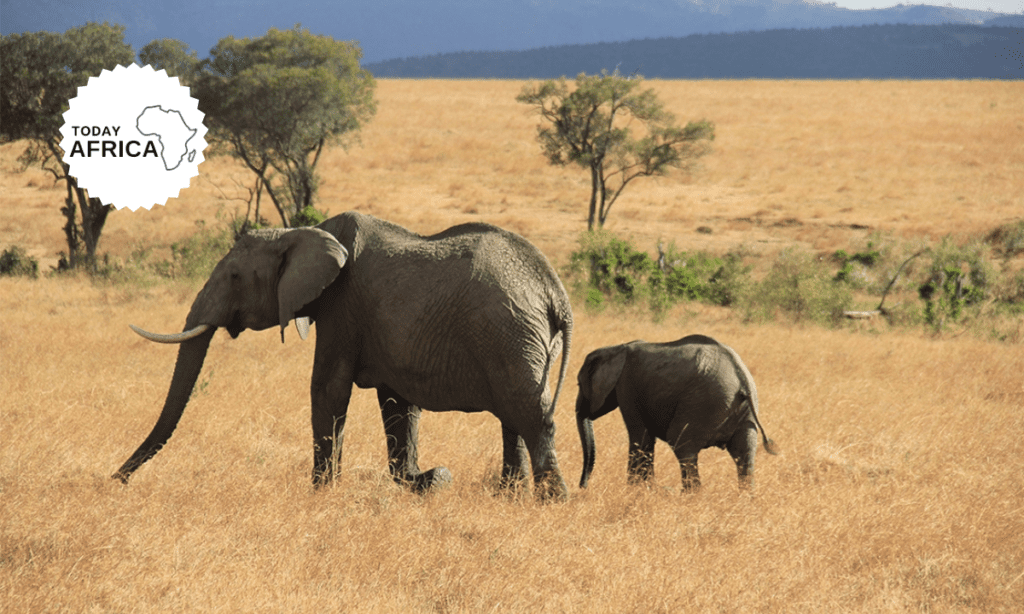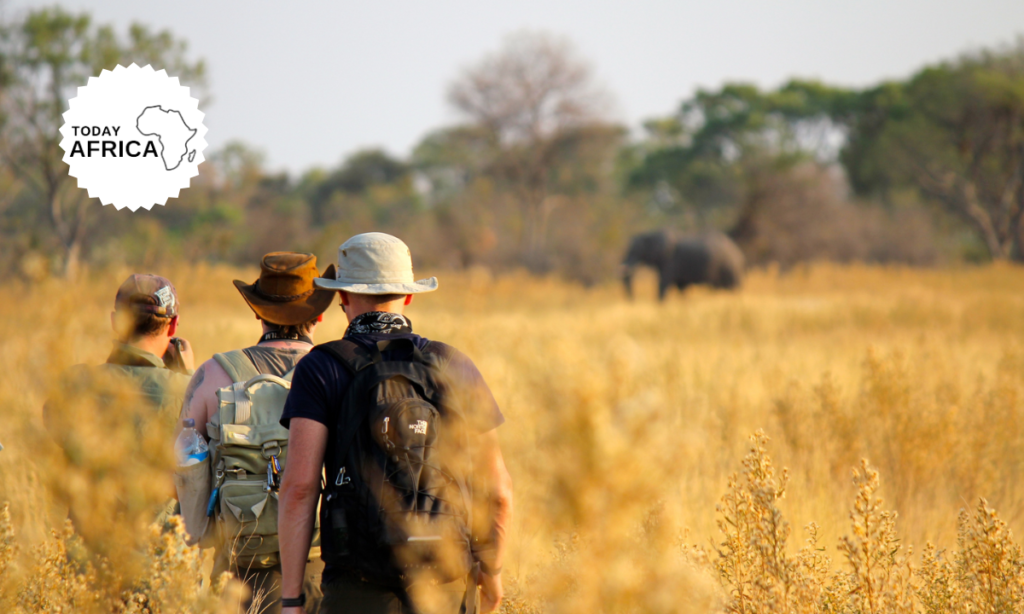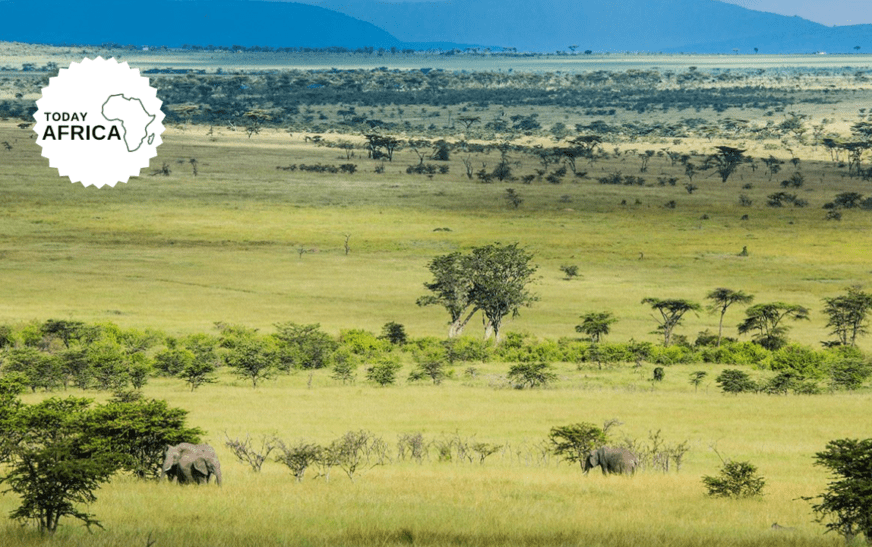Clothing isn’t the only thing to pack for a safari. There’s a lot of little things about traveling to Kenya that you need to know before you go.
Prepare your documents
Your passport is required to be valid for six months beyond your travel dates in Africa. They also have requirements like a certain number of consecutive blank pages being available in your passport. So be sure to check your passport well in advance of your trip, and thoroughly review all the entry requirements for each country you’re visiting.
In addition to your passport being in order, you need a Yellow Health Card and have it completed by your doctor. The Yellow Health Card is an internationally recognized record of vaccinations endorsed by the World Health Organization.
Some countries require visitors to obtain certain vaccinations as part of their entry requirements. These vaccinations should be completed with the date of administration, the date the vaccination is valid until and be certified with a stamp and signature from your doctor.
Without it, some countries won’t allow you off the plane if you can’t present this card, so it’s equally as important as having your passport. Click here for the best safari lodges in Kenya and their prices.
What to Pack for a Safari in Kenya

The primary activity on an African safari is going on game drives, which are what safaris are called in Africa. While there are often additional activities like walking safaris offered, the majority of your time will be spent sitting in safari vehicles with you and your guide looking for the various wildlife you’ve come to see. That’s why your clothes need to be comfortable for you.
1. Luggage and packing essentials
You are required to travel with soft-sided luggage that can easily be stuffed into compartments.
Some airlines can offer luggage storage for a small fee. This can be a convenient option if you’re returning to the same airport. Just bring a duffel bag with you to take along to your safari destination, and store the rest of your luggage.
But if you’re continuing on to another safari destination, you’ll have to take everything along with you.
You can use packing cubes to keep everything organized in the duffel and add a little extra sturdy protection.
One other thing to invest in as a TSA approved clear toiletry bag, and this is essential for your Kenya packing list. Kenya’s plastic bag ban law is very strict and if you’re caught using them, you will be fine or face jail term.
Do not bring any sort of plastic bag into Kenya or Tanzania. Instead, especially if you like to carry on, get a TSA approved clear toiletry bag.
2. Clothes
When it comes to what to wear, comfort should be prioritized over anything else when you’re spending time in the bush. But packing sensibly doesn’t have to mean frumpy, either.
Some luxury safaris like SkySafari include laundry service in their camps and lodges. This will help you pare down to the essentials for our 10-day safaris in Tanzania and Kenya.

With laundry service available, you don’t need to pack any more than 2 pairs of pants, 2 long sleeve shirts and one pair of pajamas. We recommend bringing enough underwear for your entire trip or washing them out yourself. Soaps are usually provided to wash out whatever you’d like yourself in your tent or room.
Pants and long sleeves
If you’re going on safari in East Africa in places like Kenya or Tanzania, then you’ll be just a few degrees away from the equator where the sun is strong. Even though it might seem counter-intuitive to pack pants and long sleeves when the weather will be hot, you’ll need them for protection from the sun.
Read Also: Is kenya a Visa Free Country Or Something is Attached?
Long sleeves and pants also help minimize bites and protect you from scrapes on walking safaris. Shorts, skirts and tank tops can be fine around the camp or lodge, but for game drives and bush walks stick to lightweight pants and long sleeve shirts.
Earth tones
Clothing in earth tones is essential because of a fly called the tsetse fly, which is a biting fly. They are attracted to dark blue and black, and tsetse fly traps are a blue or black cloth strung up in the trees where they are active.
Wearing blue or black makes you a tsetse fly trap and they can (and will) bite right through your clothing. Insect repellent is not effective in keeping tsetse flies away and the tsetse fly has been linked with a disease called sleeping sickness.
Utility jacket
Game drives typically begin early and you’re out and about by 5am – 6am. The temperatures between night and day can be drastic, and you’ll practically experience all four seasons in one day.
Mornings are cool and a jacket is necessary. A utility jacket is also functional since all the pockets come into use for easy access to lens cleaning cloths and lenses for your camera.

Don’t bother with packing a rain jacket. Most safari companies provide ponchos for guests if you do have a rainy day. The safari vehicles also can be closed up. So skip the extra weight of a rain jacket that you may only need once or twice.
Scarf
You need a scarf to keep warm in the early morning, to protect yourself from the sun when you strip off some layers under the hot midday sun.
Ladies can use it as a headband to keep hair off your face on windy days. It will protect your head from the hot sun no matter if you’re a man or woman.
Footwear
You definitely don’t need to tote along heavy hiking boots. Not only will they be too hot, but hiking boots are clunky to pack. Really, any pair of sturdy closed-toe shoes will do.
Also, bring a pair of lightweight waterproof hiking shoes. It might rain during your stay, and when it does rain the ground can turn muddy.
Bring a pair of flip flops for walking around in your tent and going to the pool at your camp or lodge.
Hat
There’s really no special safari hat you need, either. Stick to a wide brim style with a chin strap. The wide brim will help keep the sun off your face and neck. The chin strap will keep the hat from flying off when your guide gets word about an animal, then goes rushing off to make sure you see it.
Swim suit and casual clothes for around camp
Many camps, especially luxury camps, have pools these days. There’s no better place to be than lounging in the pool during the hot afternoons between game drives. Don’t forget a swimsuit!
You can also be more casual around camp in a pair of shorts and a tank top or tshirt. It’s not necessary to stick to neutral colors either, like when you’re out on game drives.
3. Waterproof bag
Dust is a problem and hard on your camera equipment. And if you have any rainy days like one we had, you’ll be c ombating both rain and sticky mud.
Having a waterproof dry bag large enough to stick your equipment and anything else you want to stay dry or dust/mud free will definitely come in handy. It folds down small and weighs basically nothing, so is easy enough to pack.
4. Skin and hair care
The bush is dry, so don’t leave home without your favorite moisturizer and a good conditioner. This way your skin doesn’t get flaky and dry.
5. Plug convertors
Each country can be different with the plug type, so verify the plug type for the countries you’re visiting before your trip.
6. USB flash drive and memory cards
Capturing some incredible photos to remember your time on safari by and share with family and friends back home is likely important to you.
The opportunity to borrow equipment is an excellent amenity to look out for, as good lenses appropriate for photographing wildlife can cost nearly as much as the trip itself. Just remember to pack a USB flash drive to save any photos from the cameras you borrow or bring your own extra memory cards to use.
7. Insect repellent
Safari companies do provide insect repellent and sunscreen in the safari vehicles. We still encourage you to pack your own.
You need an insect repellent since there are diseases that biting insects in Africa can carry, including malaria.
There is a risk of malaria in both Tanzania and Kenya. Malaria prevention is important when traveling to malaria endemic areas and in preparation for your safari trip, take preventive malaria medication prescribed by your doctor.
8. First aid kit
Remember that you will be in the bush away from the town or village. Be sure to pack yourself a first aid kit with medications you might need like aspirin, cold medicine in case you do catch a bug, an antihistamine for reactions to insect bites, diarrhea medication like Immodium, sunscreen and cough drops or throat lozenges.
Remember that experiences can vary depending on the specific location and the type of safari you’re undertaking. Always check with your tour operator or accommodation for any specific recommendations based on the region and time of year you’ll be visiting. Personal preferences and health considerations may also influence your packing choices.







![15 Best Beaches in Morocco to See This Year [& Essential Packing List]](https://todayafrica.co/wp-content/uploads/2023/12/Blue-Simple-Dad-Appreciation-Facebook-Post-1200-×-720-px-6-9.png)








